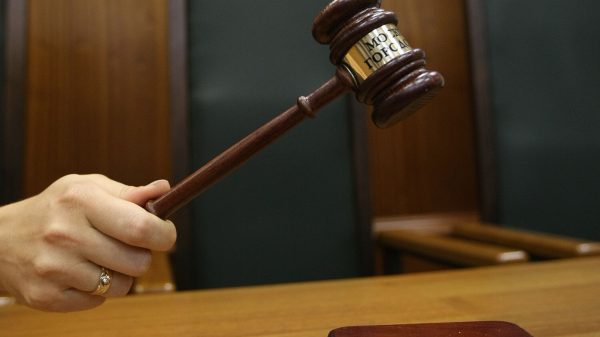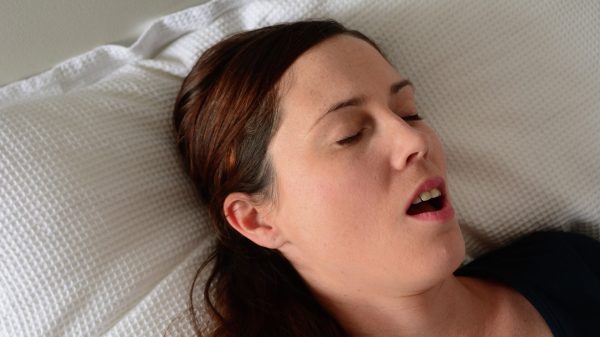White House Chief of Staff Mark Meadows listens as Dr. Sean Conley, the White House physician talks about President Trump's health
Credit: Reuters
US President Donald Trump’s doctors have revealed his oxygen levels dropped two days running and that he is taking a steroid treatment to help counter coronavirus, admitting giving an "upbeat" assessment of his health in an earlier briefing.
But the president’s physician Dr Sean P. Conley said Mr Trump’s health had improved and he could be discharged as early as Monday.
Dr Conley admitted giving an overly rosy picture of Mr Trump’s health in a Saturday briefing, where he did not admit the president had received supplemental oxygen.
Mr Trump was said to have been out of bed and moving unaided in the presidential suite in Walter Reed Medical Center, where he is being treated for Covid-19 after a positive test on Thursday, and that his heart, kidney and liver appeared normal.
However doctors disclosed that Mr Trump was given dexamethasone on Saturday, a steroid treatment that The World Health Organisation recommends is used only for patients with “severe and critical Covid-19”.
President Donald Trump leaves the White House for Walter Reed National Military Medical Center on the South Lawn of the White House on October 2, 2020
Credit: Drew Angerer
The US National Institutes of Health has issued similar guidance. Dr Conley also triggered new confusion by saying there had been “some expected findings” on Mr Trump’s lungs after tests but declined to give more clarity despite repeated questions from reporters, save for saying the president performed well on breathing tests.
Dr Conley also declined to say exactly how low Mr Trump’s blood oxygen levels had dropped, both on Friday — when the president was given supplemental oxygen — and on Saturday, when the steroid treatment was first used.
The responses meant there remained a lack of clarity on Sunday afternoon about the exact state of Mr Trump’s health as he battled the illness, even as doctors gave an upbeat portrayal and said he could be discharged today.
Dr Brian Garibaldi, another doctor treating Mr Trump, said at the briefing on the hospital steps yesterday: “Today he feels well. He’s been up and around. Our plan for today is to have him to eat and drink, be up out of bed as much as possible, to be mobile.
“And if he continues to look and feel as well as he does today our hope is that we can plan for a discharge as early as tomorrow to the White House where he can continue his treatment course.”
On Saturday night, Mr Trump tweeted out a four-minute video message delivered from his hospital in Washington DC. He was wearing a suit jacket and shirt, though unusually no tie, and sitting at a desk.
People hold a pro-Trump rally on October 3, 2020 in the borough of Staten Island in New York City.
Credit: Stephanie Keith
The president said he was “feeling much better” and would “be back soon” but also cautioned that the “real test” in his illness was in the days to come.
“I came here, wasn’t feeling so well, I feel much better now. We’re working hard to get me all the way back,” said Mr Trump, who looked a little pale in the video.
He also spoke in glowing terms about the treatments he was receiving, calling them “miracles coming down from God”, and thanked supporters and world leaders for their messages.
The White House later released photographs of the president working at a desk. He also retweeted a number of messages on Saturday night and Sunday, showing signs of his usual behaviour on social media.
The briefing on Sunday revealed that the state of Mr Trump’s health on Friday and Saturday was much more concerning than White House doctors and officials were briefing at the time, adding to critics’ claims of a “credibility gap” in their contemporary public statements.
Dr Conley conceded in his Sunday briefing that his responses the day before, when he had not revealed Mr Trump had been given oxygen despite repeated pressing from reporters, may have appeared misleading.
“I was trying to reflect the upbeat attitude that the team, the president [through] the course of illness has had,” Dr Conley said.
“I didn’t want to give any information that might steer the course of illness in another direction, and in doing so, you know, it came off that we were trying to hide something, which wasn’t necessarily true.”
Mr Trump is now receiving three drug treatments: A five-day course of the experimental drug Remdesivir, an antibody cocktail being tested by the drug maker Regeneron, which is also experimental, and dexamethasone.
Martin Landray, the professor of medicine and epidemiology at the University of Oxford who led a trial looking into dexamethasone’s impact on Covid-19, told The Daily Telegraph the treatment worked best in serious cases. “It’s a very good drug in the right patients.
But it’s not effective in patients who do not require oxygen, ventilatory support and so on,” Prof Landray said. It remains to be seen if Mr Trump will be released from hospital on Monday, given the drug treatments he is taking and uncertainty about the coming days. Sunday was the fouth day of Mr Trump’s illness.
His doctors have said days seven to 10 are the most critical.

























































Свежие комментарии